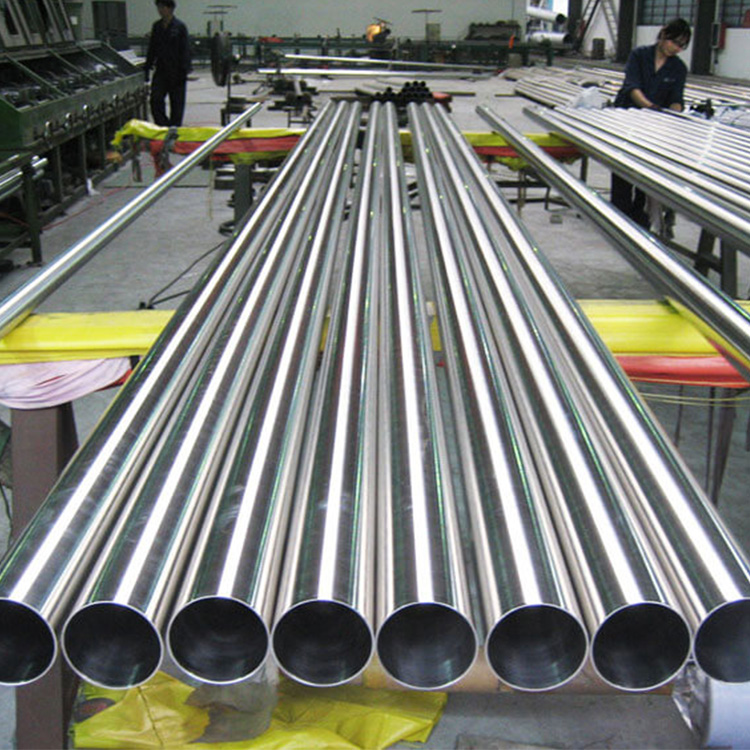
Aplicaciones de las aleaciones de níquel: un material versátil
Introducción:
Las aleaciones de níquel son una categoría de materiales conocidos por sus propiedades y versatilidad excepcionales. Compuesto principalmente de níquel, estas aleaciones exhiben una excelente resistencia a la corrosión, alta resistencia y resistencia al calor superior. Este artículo tiene como objetivo explorar las diversas aplicaciones de las aleaciones de níquel en diversas industrias.
-
Industria aeroespacial:
Las aleaciones de níquel juegan un papel vital en la industria aeroespacial debido a sus excelentes propiedades mecánicas y resistencia a altas temperaturas. Se utilizan en motores de aviones, componentes de turbinas de gas y cámaras de combustión, donde pueden soportar condiciones extremas y mantener su resistencia e integridad. -
Procesamiento químico:
La industria de procesamiento químico depende en gran medida de las aleaciones de níquel por su resistencia a ambientes corrosivos y diversos productos químicos. Estas aleaciones se utilizan comúnmente en reactores químicos, tuberías, válvulas y bombas, lo que garantiza el manejo seguro y eficiente de sustancias corrosivas. -
Generación de energía:
En las plantas de generación de energía, las aleaciones de níquel se utilizan en componentes críticos como generadores de vapor, intercambiadores de calor y álabes de turbinas. La excepcional resistencia al calor y a la corrosión de las aleaciones de níquel les permite soportar las exigentes condiciones de generación de energía, incluidas las altas temperaturas y los entornos corrosivos. -
Industria del petróleo y el gas:
La industria del petróleo y el gas requiere materiales que puedan soportar entornos agresivos, incluidas condiciones de alta presión y alta temperatura. Las aleaciones de níquel encuentran una amplia aplicación en equipos de exploración y producción de petróleo y gas, como válvulas, tuberías y herramientas de fondo de pozo, proporcionando una excelente resistencia a la corrosión y al estrés mecánico. -
Campo médico:
Las aleaciones de níquel también se utilizan en el campo médico, particularmente en la fabricación de dispositivos médicos e implantes. Estas aleaciones son biocompatibles, lo que las hace adecuadas para aplicaciones como implantes ortopédicos, instrumentos dentales y herramientas quirúrgicas. La resistencia a la corrosión y la resistencia de las aleaciones de níquel garantizan la longevidad y fiabilidad de los dispositivos médicos. -
Industria petroquímica:
Las aleaciones de níquel encuentran un amplio uso en la industria petroquímica debido a su resistencia a productos químicos agresivos y altas temperaturas. Se emplean en equipos como intercambiadores de calor, reactores y sistemas de tuberías, lo que garantiza el manejo seguro de sustancias corrosivas en plantas petroquímicas. -
Ingeniería Electrónica y Eléctrica:
Las aleaciones de níquel se utilizan en aplicaciones de electrónica e ingeniería eléctrica debido a su alta conductividad eléctrica y resistencia a la oxidación. Se utilizan en conectores eléctricos, disyuntores, elementos calefactores y cables de resistencia, proporcionando un rendimiento confiable y longevidad en estas aplicaciones.
Conclusión:
Las aleaciones de níquel son materiales muy versátiles con una amplia gama de aplicaciones en diversas industrias. Su excepcional resistencia a la corrosión, alta resistencia y resistencia al calor superior los hacen indispensables en las industrias aeroespacial, de procesamiento químico, de generación de energía, de petróleo y gas, médica, petroquímica y electrónica. Las propiedades únicas de las aleaciones de níquel contribuyen a la eficiencia, seguridad y durabilidad de los componentes y equipos críticos en estos sectores, consolidando su posición como una valiosa opción de material para aplicaciones exigentes.
